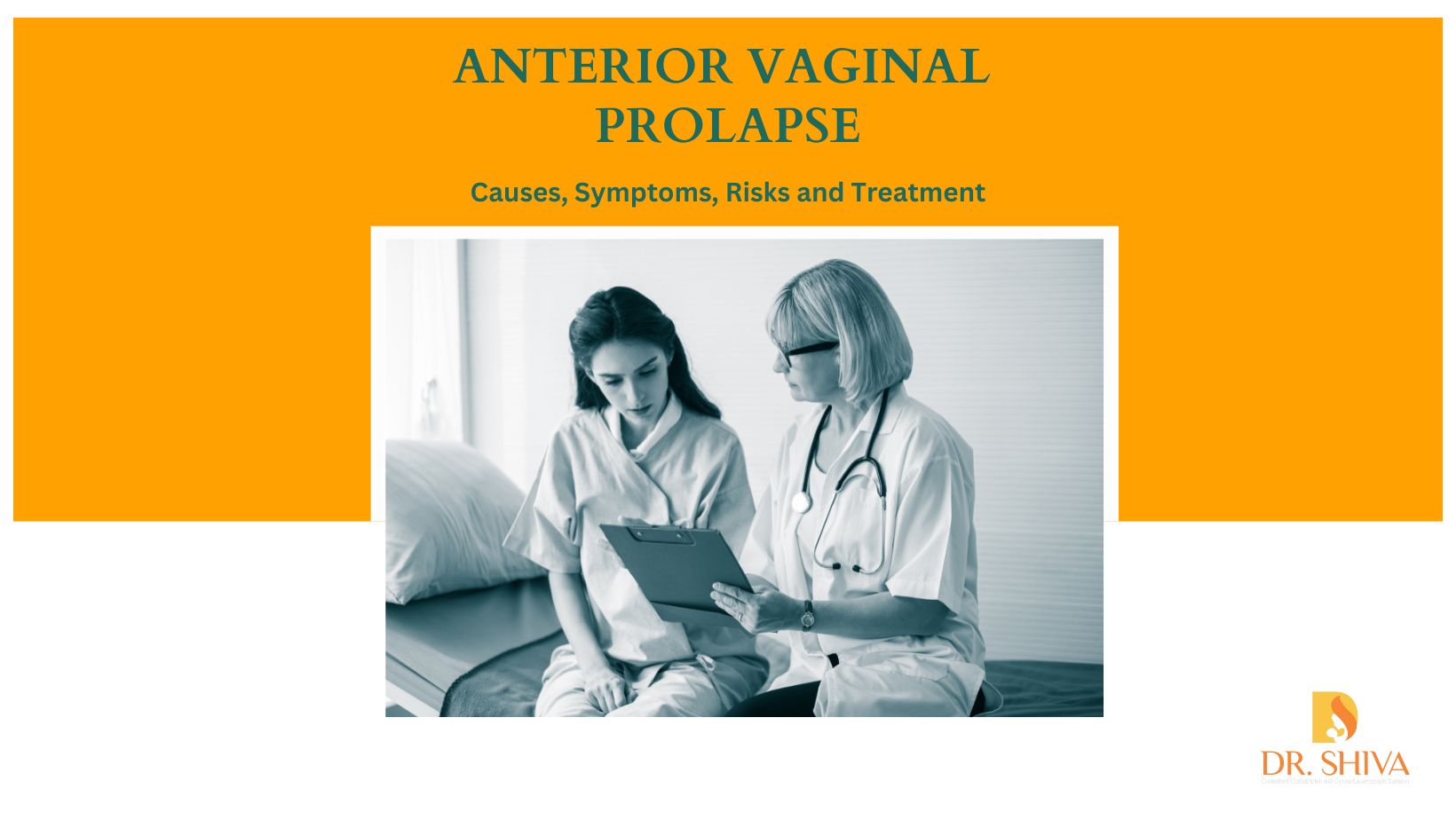
Anterior vaginal prolapse, also known as cystocele or prolapsed bladder, is a condition in which the bladder bulges into the front wall of the vagina.
Causes
Anterior vaginal prolapse occurs when the muscles and tissues that support the bladder and vaginal walls become weak or damaged. Factors that can cause this include:
- Age: As women age, the muscles and tissues in the pelvic area naturally weaken, increasing the risk of anterior vaginal prolapse.
- Pregnancy and childbirth: The strain of pregnancy and childbirth can cause damage to the muscles and tissues in the pelvic area, leading to anterior vaginal prolapse.
- Chronic constipation: Straining during bowel movements can put pressure on the pelvic area, leading to anterior vaginal prolapse.
- Hysterectomy: in some cases the removal of the uterus
- Obesity: Being overweight or obese can put extra pressure on the pelvic area, increasing the risk of anterior vaginal prolapse.
- Menopause: The hormonal changes that occur during menopause can cause the tissues in the pelvic area to weaken, increasing the risk of anterior vaginal prolapse.
- Frequently lifting heavy weights
Symptoms
Many women with anterior vaginal prolapse do not experience any symptoms. Some may, however, experience one or more of these symptoms:
- bulge or lump in the vagina
- experiencing pressure or fullness in the pelvic area
- Difficulty in urinating or during bowel movement
- Discomfort or experiencing pain during sexual activity
- Urinary incontinence or leakage
Risks and Complications
Anterior vaginal prolapse can increase the risk of developing certain complications, including:
- Recurrence: Anterior vaginal prolapse can recur even after treatment, especially in women who continue to engage in activities that put pressure on the pelvic area.
- Urinary tract infections (UTIs): Women with anterior vaginal prolapse may be at an increased risk of developing UTIs due to the difficulty in fully emptying the bladder.
- Sexual dysfunction: Women with anterior vaginal prolapse may experience pain or discomfort during sexual activity, leading to sexual dysfunction.
Diagnosis
Anterior vaginal prolapse is typically diagnosed during a pelvic exam. Your healthcare provider may ask you to bear down or cough while they examine your pelvic area to check for any bulging. Other diagnostic tests that may be performed include a urine test to check for infection or other underlying conditions, and a bladder function test to assess how well your bladder is functioning.
Treatment Options
Several treatment options are available for anterior vaginal prolapse, depending on the severity of the condition and the individual’s symptoms. These may include:
- Pelvic floor exercises: Pelvic floor exercises, also known as Kegels, can help strengthen the muscles in the pelvic area and improve symptoms of anterior vaginal prolapse.
- Pessary: A pessary is a small device that is inserted into the vagina to help support the bladder and vaginal walls and helps to reduce the symptoms.
- Surgery: In more severe cases of anterior vaginal prolapse, surgery may be necessary to repair the damaged muscles and tissues in the pelvic area. It involves moving the prolapsed bladder back into its place. A special type of tissue graft may be used to repair the vaginal tissues and provide more support.
You may also bring some lifestyle changes to reduce the progression of anterior vaginal prolapse-
- Have food high in fiber to prevent or reduce constipation.
- Keep your weight in control to prevent an increase in body weight
- Try to control coughing if possible and have medicines on time to prevent it from progressing.
- Avoid lifting heavy weights and when carrying anytime try to use your legs instead of putting pressure on your back or waist.
Anterior vaginal prolapse is a common condition that can cause discomfort and increase the risk of developing certain complications. Early diagnosis and appropriate treatment can help improve symptoms and reduce the risk of complications. It’s important to speak with your healthcare provider if you have any concerns about anterior vaginal prolapse.

